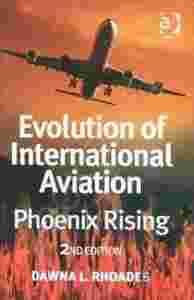|
The purpose of this book is twofold. First, it lays
out the forces that shaped the international aviation
industry and that changed all the rules in the drive for
liberalization. Second, it looks at the many interesting
and difficult choices ahead that the airline industry in
general and the international aviation industry in
particular face. These choices include many dichotomies:
pulling back from the trend toward liberalization or
embracing the liberalization trend, merging in search of
profitability or fragmenting the industry in search of
economies. These possible futures are explored including
the pros and cons of each future from a national,
consumer, employer, and employee perspective."Evolution
of International Aviation" is organized into three
parts: Part One reviews the early development of the
international aviation system. It examines the 1944
Chicago Conference, and the resulting structure and role
of ICAO; the development of the International Air
Transport Association, and its role in shaping the
international aviation system; US domestic deregulation
and European efforts to create a free market system of
aviation; deregulation in Asia. Part Two examines the
alliance movement among international air carriers, the
growth, opportunities, and challenges of alliances. Part
Three considers the future of international aviation in
light of changes to the landscape, reviewing relevant
events from an aviation system perspective. It explores
the challenges facing the industry in the current era
and discusses some of the brave new possibilities for
international aviation.This second edition of the book
is thoroughly revised and updated from the 2003
original, in light of many significant developments in
(and affecting) the industry, such as the mixed ability
of sectors to recover from 9/11, the establishment of
the low cost carrier, the consequences of rising fuel
costs (now the single greatest expense to airlines) and
growing concern with the environmental impacts of air
transport. The book also features all-new chapters on
the key topics of manufacturing, the environment and air
cargo. Overall the second edition's perspective has
expanded from a focus on airlines to consider the
broader aviation industry. Because this book is intended
for both the interested amateur and the more serious
student, references are provided in the text and at the
end of each chapter to allow for further in-depth
study.
|
|

